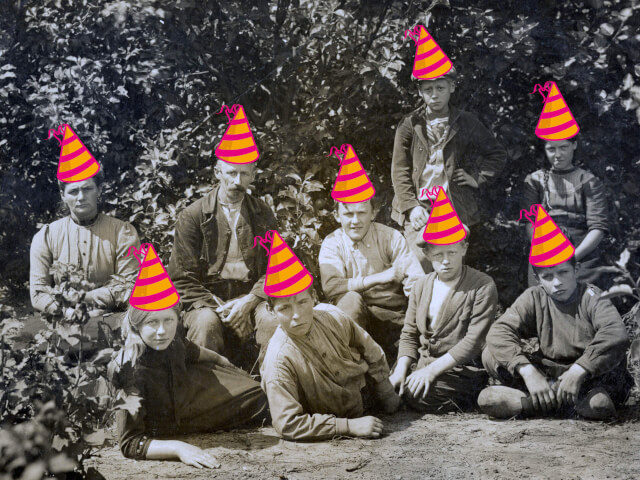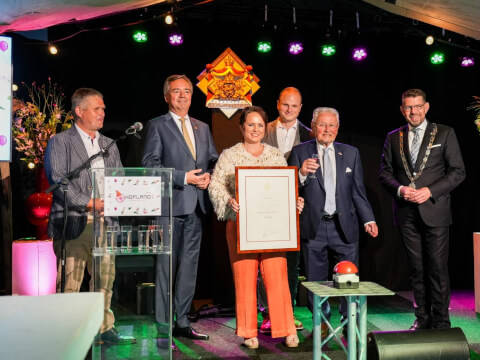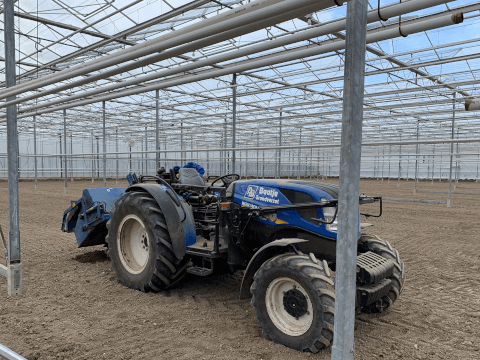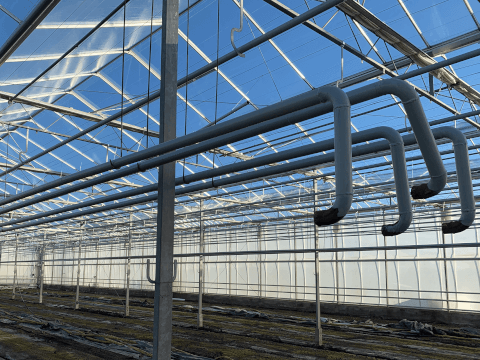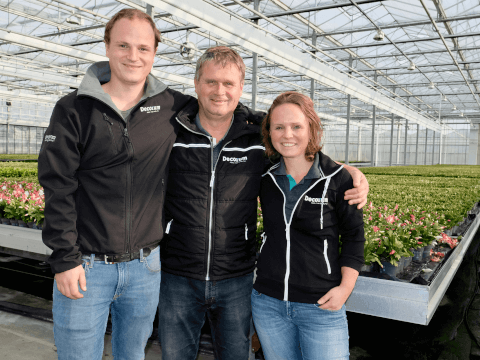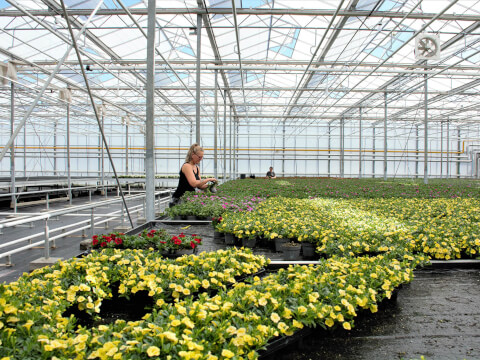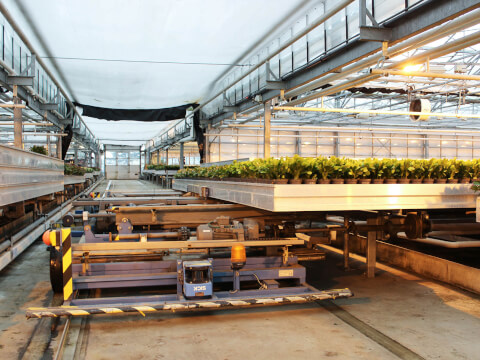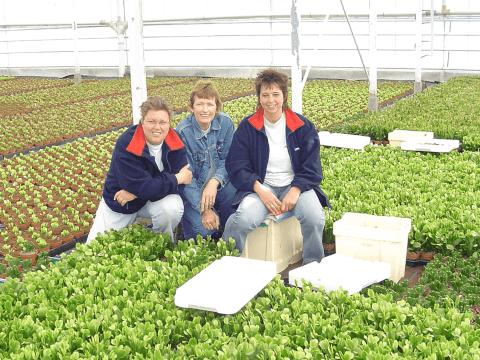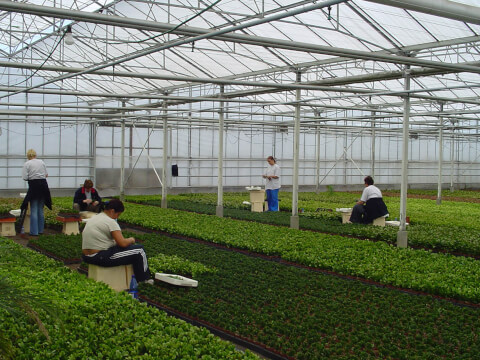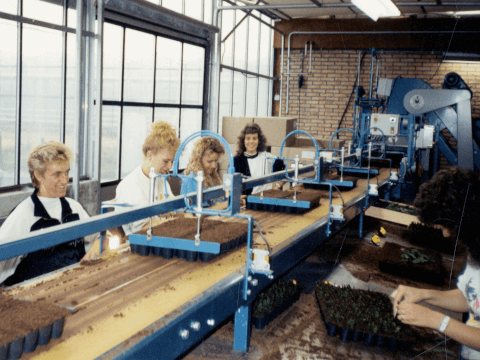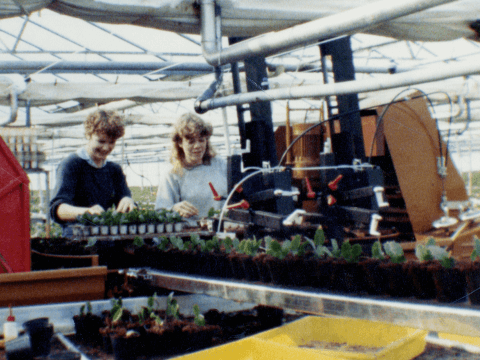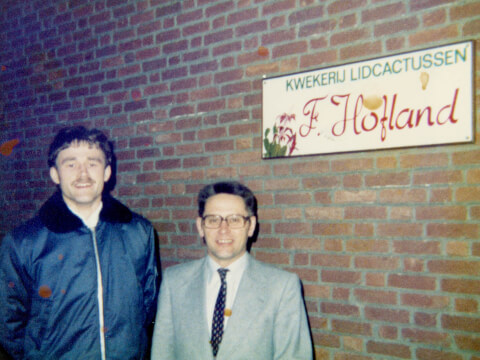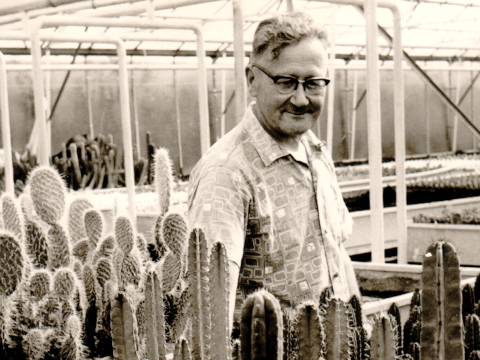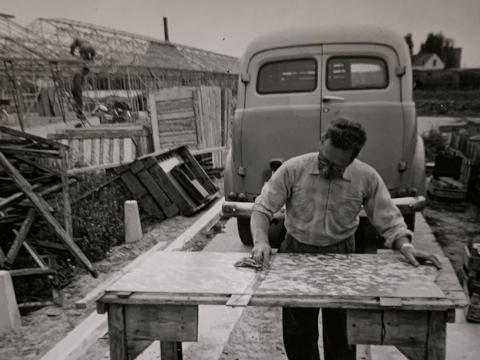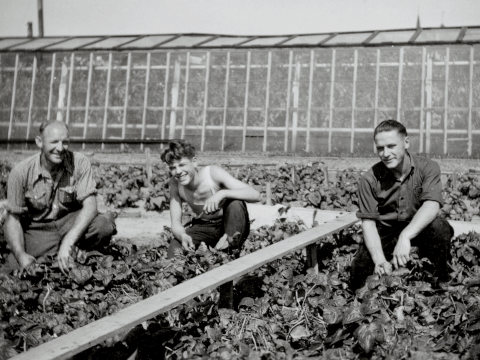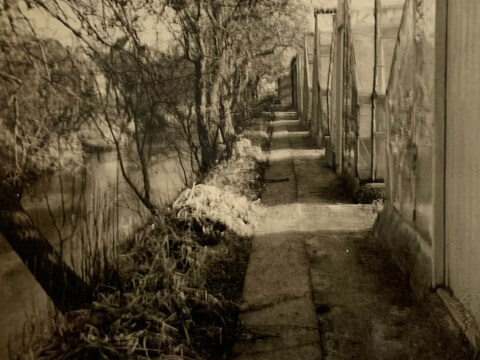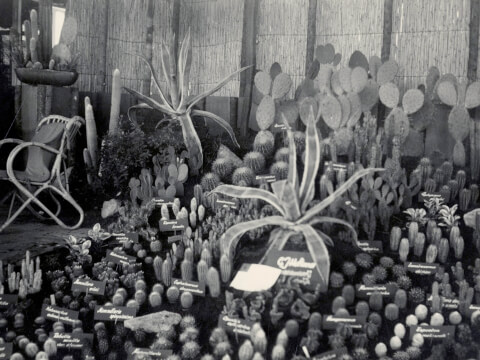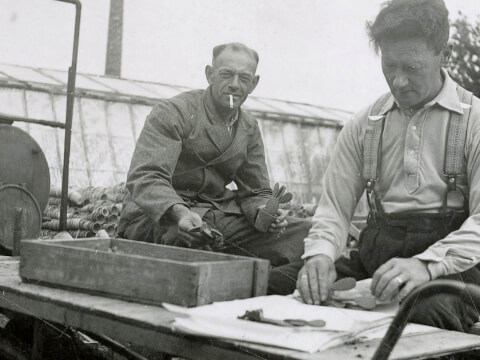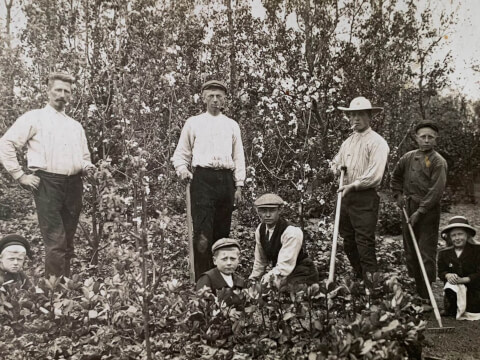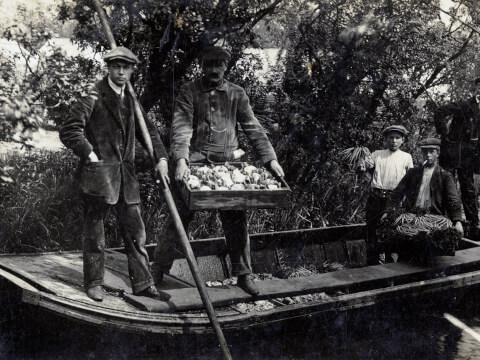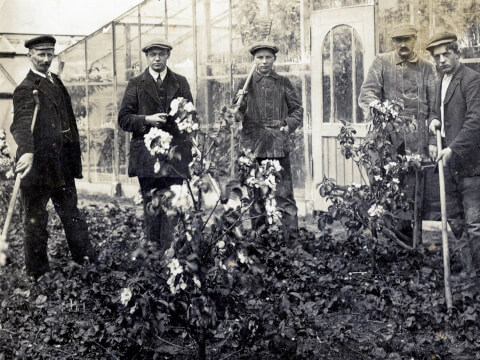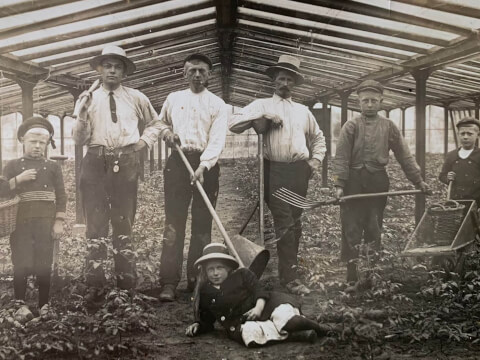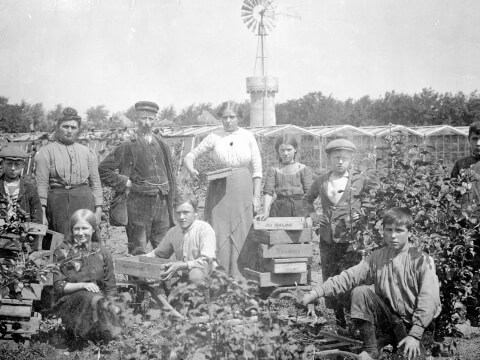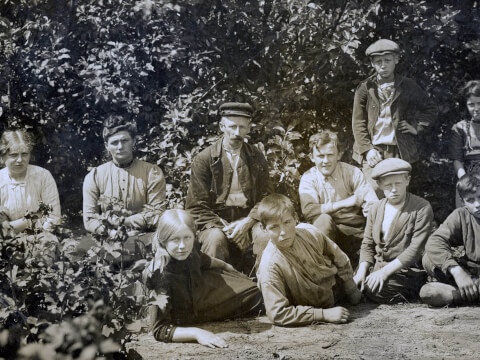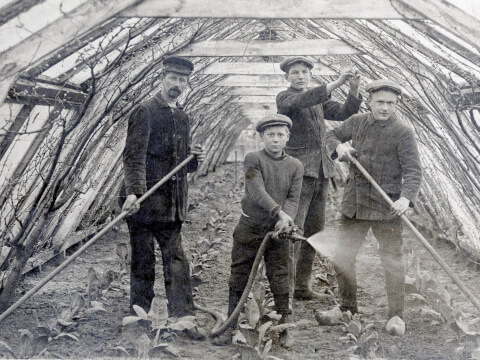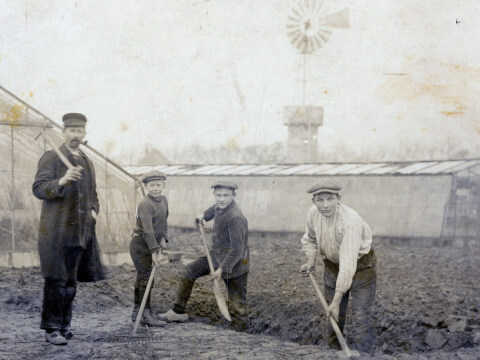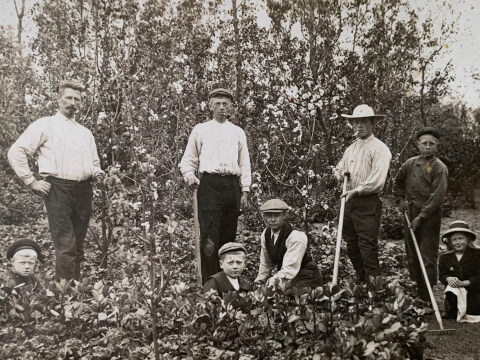THE HISTORY OF HOFLAND
Back in 1899, would Jan Hofland ever have envisaged his nursery serving customers across Western Europe? Could he have predicted that the company would cultivate flowering plants on a six-hectare site, using cutting-edge, sustainable techniques? Or that his descendants would be celebrating the 125th anniversary of the business four generations later? Learn more about all the milestones in our company’s history below.
2024
The new generation deploys modern techniques and technologies to ensure that the company continues to thrive. This year, the business celebrates an important milestone: Hofland’s 125-year anniversary. Over the past one and a quarter centuries, the company has blossomed into a Christmas cactus specialist that ships its products all over the world – pretty impressive for a business that started out as a local fruit grower.
In this special year, Hofland was appointed as a ‘Hofleverancier’, or Royal Warrant Holder. We are the first greenhouse cultivation company in Westland to bear the Royal Coat of Arms and the Royal Warrant – an achievement we are incredibly proud of. .
2022-2023
The business continues to grow: Lange Broekweg 62 is added to the site, which takes the company premises to six hectares. The Christmas cactus still plays a prominent role in the greenhouses. In spring, the greenhouses are filled with early bloomers from the fifth Hofland generation, including dianthus, checkies, calibrachoa and argyranthemum.
2021
The lease contract with the neighbour reaches the end of its term, but the company purchases Lange Broekweg 54B, which takes the total area of Hofland Flowering Plants – the company’s new name – back up to 4.5 hectares.
2018-2020
It’s time for another generation to take the reins: Father Goos Junior passes responsibility for managing the business to daughter Annemiek and son Frank, who acquire a portion of the shares in the company in 2020.
2015-2017
The company leases a 3000-square-metre greenhouse from its neighbour and converts the space for container cultivation. In spring, the greenhouse is dedicated to early-flowering calibrachoa; in autumn, it’s filled with Christmas cacti. Annemiek, Goos Junior’s daughter, also joins the family company.
2007
Peter decides to leave Hofland. Goos Junior and son Frank come up with a new plan and fully automate the business, adding a crop container system, a potting system and a sales system. They also construct an additional 5000-square-metre greenhouse kitted out with all the latest technology on an adjacent plot of open land. The company now has 3.5 hectares of greenhouse space at its disposal.
2001-2006
The company acquires more rose greenhouses; this time, it’s 8800 square metres of growing space from number 42. The company now has three hectares of greenhouse space.
1994
Expansion work continues on Lange Broekweg: The brothers purchase the rose greenhouses from number 52.
1990-1991
Frans Junior retires in 1991 and hands over the reins to sons Goos Junior and Peter. They take over the business from their father and create a limited company.
1986
Things move fast with the new generation at the helm. In 1986, the company site is fully renovated, with new greenhouses and rolling tables that are the height of new technology at the time. Goos Junior moves onto the site and Frans Junior relocates to Koningstraat in Naaldwijk – coincidentally, very close to where the company was first founded 91 years previously.
1980
Son Peter is keen to join the company ranks. Son Goos is a little more hesitant, but eventually decides to come on board. After gaining a year’s experience, a new company is set up and both of Frans Junior’s sons are made co-owners.
1961-1970
At the new site on Lange Broekweg, father Goos Senior and son Frans Junior each have one hectare of land with their own separate greenhouses. They limit their crop selection to chrysanthemums, cacti, tomatoes and cucumbers. Frans Junior becomes a specialist in schlumbergera, or Christmas cacti, which he discovers by chance via a British customer. He goes on to have great success propagating the plants from cuttings. Goos Senior passes away in 1969, and son Tom steps in to keep his business going. In 1978, Tom emigrates to France and Frans Junior takes over the business.
1960
The local council wants to purchase the land owned by father Goos Senior and son Frans Junior. Luckily, the business finds an alternative site on Lange Broekweg in Naaldwijk. The large plot of land is owned by the Klapwijk brothers, who run a company that rents out horses and coaches for weddings and funerals. However, their business is suffering as the car gains in popularity, which gives the two entrepreneurial horticulturalists an opportunity to purchase the Klapwijks’ two hectares of meadow land to divide between them..
1951-1956
Goos Senior’s business expands to two hectares once again when brother Frans Senior emigrates to Canada in 1961. Goos Senior buys the land around 1953.
1931-1950
Goos Senior’s brother, Frans Senior, also joins the industry in 1931, and begins cultivating crops on the same site on Kruisbroekweg. The brothers now manage a hectare each. When Frans Junior, Goos Senior’s son, finishes school in 1948, he immediately joins the company.
1930-1940
The company adds some new crops to its portfolio: Goos Senior becomes one of the first to experiment with growing cacti, tomatoes, lettuce, cauliflower, tulips, chrysanthemums and lathyrus. The greenhouses are packed with countless different varieties of vegetables and flowers; something that is still very much standard practice in Westland at the time.
1928
Goos Hofland Senior takes over half of the business from his father Jan. He takes action to modernise the company, adding the first heated greenhouse for tulip cultivation. There are now no less than 10 greenhouses on the site, primarily dedicated to growing peaches.
1900-1920
Jan constructs the first greenhouses on the site. In 1912, he even builds a water tower – an essential addition, because watering was a fully manual process before this point.
1899
On Kruisbroekweg – at the edge of what is now the centre of Naaldwijk – Jan Hofland sets up his own business on two hectares of rented land, growing crops such as redcurrants, apples and peaches against wooden supports. At the time, it’s common for businesses to grow multiple crops at once, particularly redcurrants, apples and early potatoes.
our family tree

